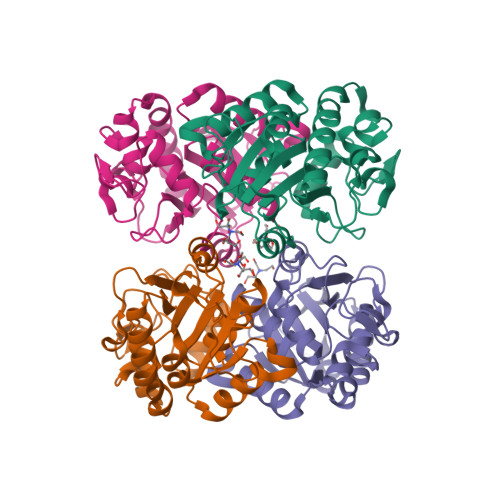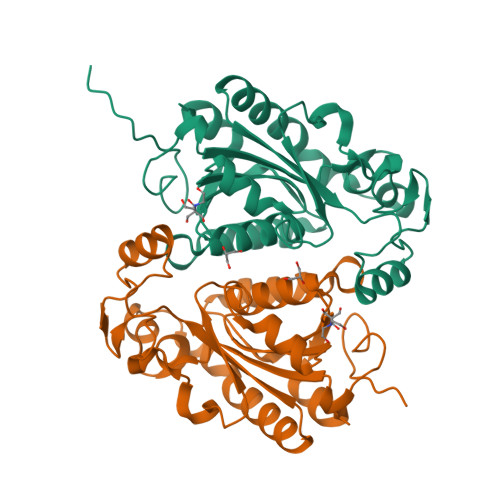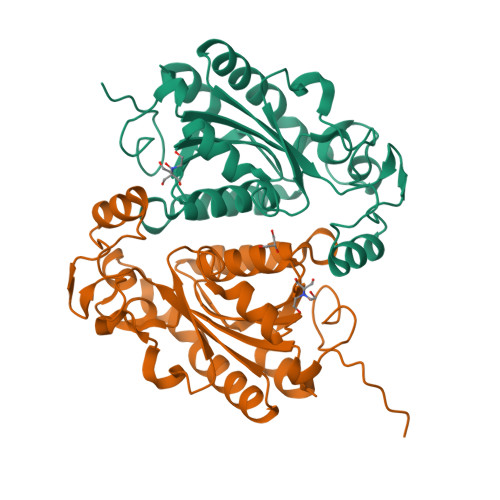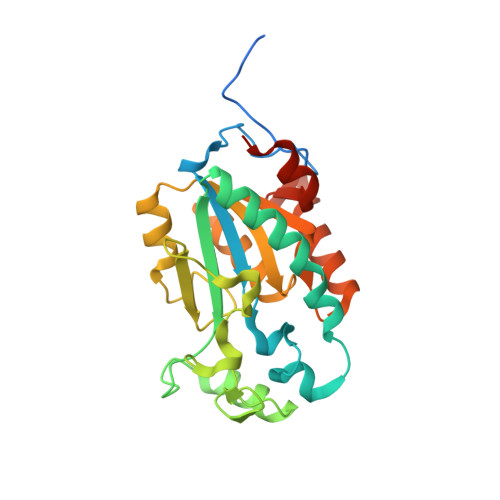Structural and biochemical characterization of the biuret hydrolase (BiuH) from the cyanuric acid catabolism pathway of Rhizobium leguminasorum bv. viciae 3841.
Esquirol, L., Peat, T.S., Wilding, M., Lucent, D., French, N.G., Hartley, C.J., Newman, J., Scott, C.(2018) PLoS One 13: e0192736-e0192736
- PubMed: 29425231
- DOI: https://doi.org/10.1371/journal.pone.0192736
- Primary Citation of Related Structures:
5BK6, 6AZN, 6AZO, 6AZQ, 6AZS - PubMed Abstract:
Biuret deamination is an essential step in cyanuric acid mineralization. In the well-studied atrazine degrading bacterium Pseudomonas sp. strain ADP, the amidase AtzE catalyzes this step. However, Rhizobium leguminosarum bv. viciae 3841 uses an unrelated cysteine hydrolase, BiuH, instead. Herein, structures of BiuH, BiuH with bound inhibitor and variants of BiuH are reported. The substrate is bound in the active site by a hydrogen bonding network that imparts high substrate specificity. The structure of the inactive Cys175Ser BiuH variant with substrate bound in the active site revealed that an active site cysteine (Cys175), aspartic acid (Asp36) and lysine (Lys142) form a catalytic triad, which is consistent with biochemical studies of BiuH variants. Finally, molecular dynamics simulations highlighted the presence of three channels from the active site to the enzyme surface: a persistent tunnel gated by residues Val218 and Gln215 forming a potential substrate channel and two smaller channels formed by Val28 and a mobile loop (including residues Phe41, Tyr47 and Met51) that may serve as channels for co-product (ammonia) or co-substrate (water).
Organizational Affiliation:
CSIRO Biocatalysis and Synthetic Biology, Canberra, Australian Capital Territory, Australia.






















